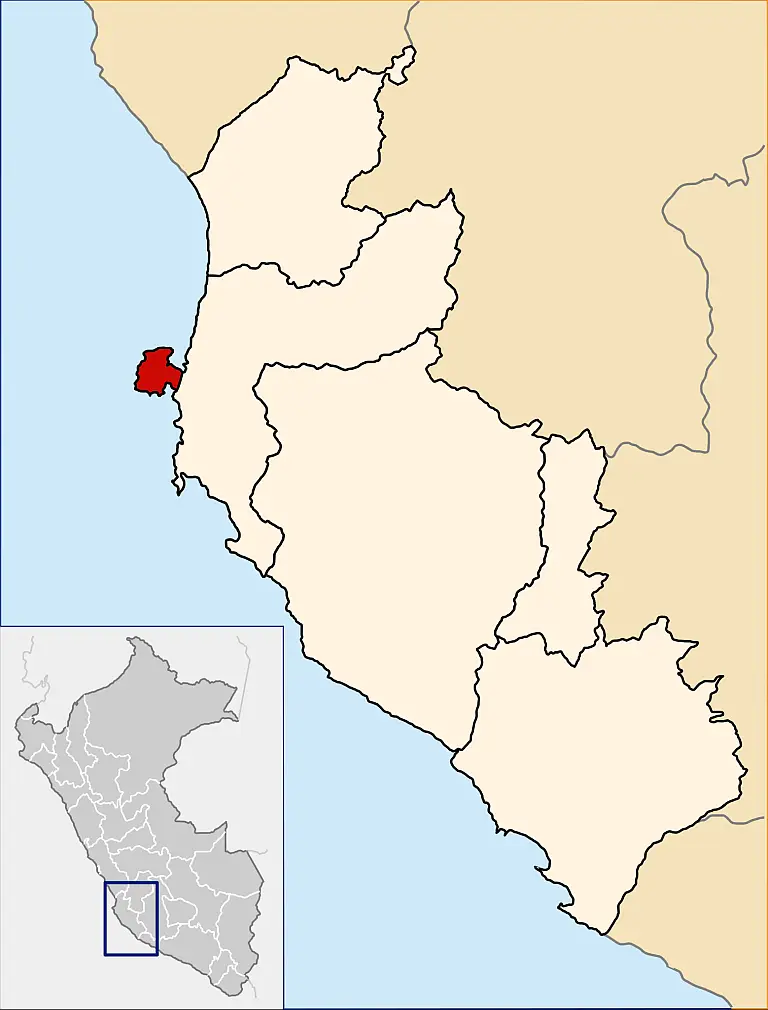On the Paracas Peninsula, overlooking Pisco Bay on the southern coast of Peru, one of the greatest mysteries of ancient civilization silently defies time. The Paracas Candelabra is a massive geoglyph etched deep into the hillside, stretching nearly 600 feet (about 181 meters). It can be clearly seen from as far as 12 miles offshore, its unique shape resembling a “three-branched candlestick” reaching towards the sky. Despite surviving for millennia, the purpose and origin of this enigmatic geoglyph remain unanswered. Could it be a sacred symbol, a navigation tool for ancient sailors, or a relic of mysterious spiritual rituals?

Unique Design and Enigmatic Age
The Paracas Candelabra is carved into the hardened fossil sand of the hillside, about 2 feet deep and surrounded by neatly arranged stones. Although visible from afar, the dry, arid environment of the Paracas Peninsula ensures the geoglyph cannot easily be erased.
The exact age of the geoglyph remains a topic of debate. Archaeologists have found numerous ceramic fragments near the site, dated by radiocarbon methods to around 200 BCE, corresponding to the Paracas culture. However, this only proves that the Paracas people inhabited the area—it does not confirm they were the creators of the Paracas Candelabra. Some theories suggest the geoglyph could be much older, belonging to civilizations yet to be discovered.

Fascinating Theories About the Paracas Candelabra
The grandeur and mystery of the Paracas Candelabra have inspired researchers to propose various theories to decode its meaning.
- A Sacred Symbol
One of the most popular theories suggests that the Paracas Candelabra has religious significance, symbolizing the trident of Viracocha, the great creator god in Incan mythology. The Incas believed Viracocha created the world and protected humans during times of hardship. The geoglyph may have been an effort to summon the god’s presence to bless and aid the people. - A Navigational Tool for Sailors
Given its position on a hillside overlooking the sea and its enormous size, many scientists believe the Paracas Candelabra once served as an ancient lighthouse. In a time before modern navigation technology, the geoglyph could have acted as a landmark to guide ancient sailors safely back to the coast. Since Paracas was an important settlement for ancient civilizations, this theory has garnered considerable support. - Rituals and Hallucinogenic Practices
Another theory links the geoglyph to the use of Jimson weed, a powerful hallucinogenic plant. It is speculated that ancient inhabitants of the Paracas Peninsula may have traveled as far as modern-day California to harvest this plant. The Paracas Candelabra could have been created as a marker for spiritual ceremonies or hallucinogenic rituals, helping people “communicate with the gods” or achieve a trance-like state. - An Ancient Seismic Instrument
A bold hypothesis proposed by researcher Beltrán García suggests that the Paracas Candelabra could function as a form of “ancient seismograph.” Its unique shape and strategic location may have been used to detect tremors and movements of the Earth’s crust, not only in Peru but on a global scale. While unconventional, this theory provides a fascinating perspective on the ancient understanding of natural phenomena.

Historical Value and Tourist Attraction
Though its mystery remains unsolved, the Paracas Candelabra has become one of Peru’s most renowned landmarks, attracting thousands of visitors and researchers each year. It is not just an archaeological relic but also a testament to the creativity and remarkable engineering skills of prehistoric civilizations. Standing before the Paracas Candelabra, modern observers cannot help but wonder, “How did ancient people create such a massive structure?” and “Why did they make it?”
For those passionate about exploration, the Paracas Candelabra is an ideal destination to marvel at its enigmatic beauty and immerse themselves in the legendary stories that surround it. The vast hillside, the massive geoglyph, and the endless blue sea ahead create an unforgettable natural masterpiece.

Conclusion: The Value Lies in the Journey of Discovery
The Paracas Candelabra may remain an unsolvable riddle. Its true purpose might have been lost to time, along with the ancient civilizations that once thrived on the Paracas Peninsula. However, its mystery is precisely what makes it so captivating and mesmerizing to us today.
Perhaps the true value of the Paracas Candelabra does not lie in its size or purpose, but in the curiosity and desire for discovery it inspires. Standing before this ancient drawing, we are reminded of the grandeur of history and the ingenuity of our ancestors. This enduring enigma lies silently in the Peruvian landscape, challenging us to continue searching, exploring, and expanding our understanding of the world.






